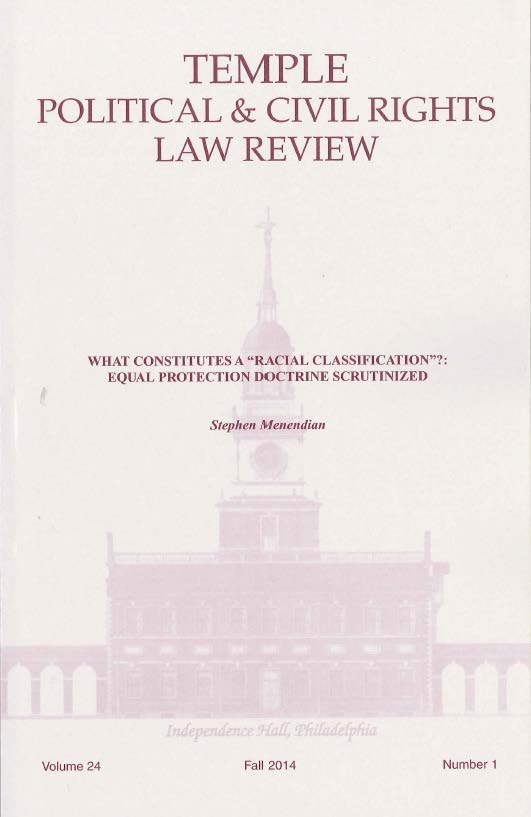
In his new article, "What Constitutes a Racial Classification? Equal Protection Doctrine Scrutinized" for the Temple Political and Civil Rights Law Review, Haas Institute Assistant Director Stephen Menendian examines the growing number of anomalies within racial classification jurisprudence. Stephen argues that these anomalies will require either clarification from the Supreme Court or the development of an alternative equal protection paradigm. Useful for students, scholars, or constitutional advocates, this article clarifies a number of aspects of equal protection law and directs attention to critical indeterminacies and ambiguities that will become central to constitutional law arguments in the near future.
ABSTRACT
The general rule against racial classifications forms a cornerstone of equal protection jurisprudence and constitutional law more broadly. In most cases decided by the Supreme Court involving this issue, the presence of a racial classification is presumed by the litigants and uncritically accepted by the Court. Recently, creative advocates seeking to extend heightened judicial scrutiny to unconventional fact patterns and new contexts have raised difficult questions about what is and is not a racial classification, rendering this issue a site of contest. Litigants seeking to rein in a wide range of state action, from immigrant detentions to stop-and-frisk policies, are asserting the presence racial classifications, sometimes successfully. At the same time, policymakers are abandoning the use of individual racial classifications when pursuing race-conscious goals to insulate them from heightened review.
This article confronts the need to clarify the term “racial classification” and the scope of the anti-classification principle. The Supreme Court, to date, has never provided a definition of the term “racial classification.”
As a descriptive legal principle, the term is a misnomer; it is incomplete and overbroad. A surprisingly subtle term of art, the anti-classification principle's descriptive simplicity masks considerable ambiguity and indeterminacy, which provides litigants with opportunities to press its boundaries and assert novel claims. This article surveys the Court's anti-classification jurisprudence for coherence and contradiction, searching for a trans-contextual definition of the term while also identifying broad areas of ambiguity that demand greater clarity and further judicial guidance.
The citation for this article is: 24 Temp. Pol. & Civ. Rts. L. Rev. 81
This article is available anywhere law review articles are found, including Heinonline here.




